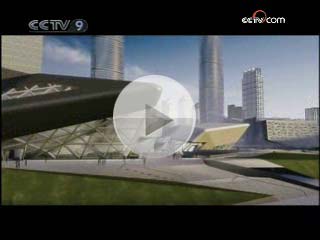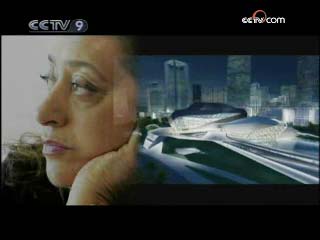------Program code: DO-081230-07862 (what's this?)
Source: CCTV.com
12-30-2008 17:10
 |
The construction processes involved in erecting the Guangzhou Opera House can be encountered to those involved in constructing the Sydney Opera House.
Construction of the Sydney Opera House began in March 1959, but because its sail-shaped exterior was extremely hard to accomplish, the entire project took 14 years to complete at a cost of 102 million Australian dollars. Once considered to be the wrong building for Sydney Harbour by many Australians, today the Sydney Opera House is the pride of Australia and attracts around 6.4 million visitors every year.
 |
For his excellent design of the landmark building, in 2003 Danish architect Jorn Utzon won the Pritzker Architectural Prize. The jury for the Pritzker Prize stated that the appearance of the Sydney Opera House had changed the view of a city, and that the high construction costs were totally justified.
In April 2008, after four years of construction work, the Guangzhou Opera House was finally completed. Even though she was far away in London, Zaha had constantly followed the progress of the project, and upon hearing the news the building was completed, she praised the high construction level achieved in the finished building.
In order to acquire the best visual and audio effects, the interior of an opera house has to be designed to critical standards. Usually, a rectangular interior space offers the best reverberation time, and in the case of an opera house a two level auditorium will provide the audience the best possible experience.
Before the Guangzhou Opera House, few had attempted to break these rules, but, perhaps predicatably, Zaha Hadid was one of them.
In her design for the Guangzhou Opera House, Zaha integrates the walls with a space defined by the curvature lines, and on the walls she intentionally leaves many recesses and bulges suggesting a trace of water.
These details make the interior of the opera house look more like a fantastic future world than a conventional opera house. However, many people felt that upon completion the Guangzhou Opera House would impress audiences with the intense visual impact created by its elegant curves and dynamic space.
While people were impressed by the interior space of the Guangzhou Opera House, a number of sound engineers were concerned. They felt Zaha’s interior design went against the basic laws of acoustics, and that as a result the luxurious opera house might turn out to be an audio-deficient opera house with a beautiful shell.
This is the auditorium of the Christchurch Town Hall in New Zealand built in 1972. It was the first music auditorium in the world to make use of reflective acoustics, and this is achieved through the use of reflective panels that hang from the ceiling.
When sound reaches these reflective panels, it is refracted in various directions, thus ensuring that the best quality of sound reaches every corner of the concert hall. After the successful application of this approach in the Christchurch Town Hall auditorium, most of the world’s concert halls began to use reflective panels to achieve perfect interior acoustics.
The use of reflective panels is now recognized as a standard method of solving acoustic problems in concert halls and opera houses.
In the original acoustic design, the Guangzhou Opera House was also to use reflective mirrors too.
However, this proposal was immediately rejected by Zaha Hadid. She felt that once the reflective panels were hanging on the walls, the beautiful curvature lines of the interior space of the opera house would be destroyed, and this was something she was not prepared to tolerate.
The acoustic engineers, however, believed that without reflective panels, the acoustics would be a mess. For a long time, neither side could convince each other to change their stance on this issue.
